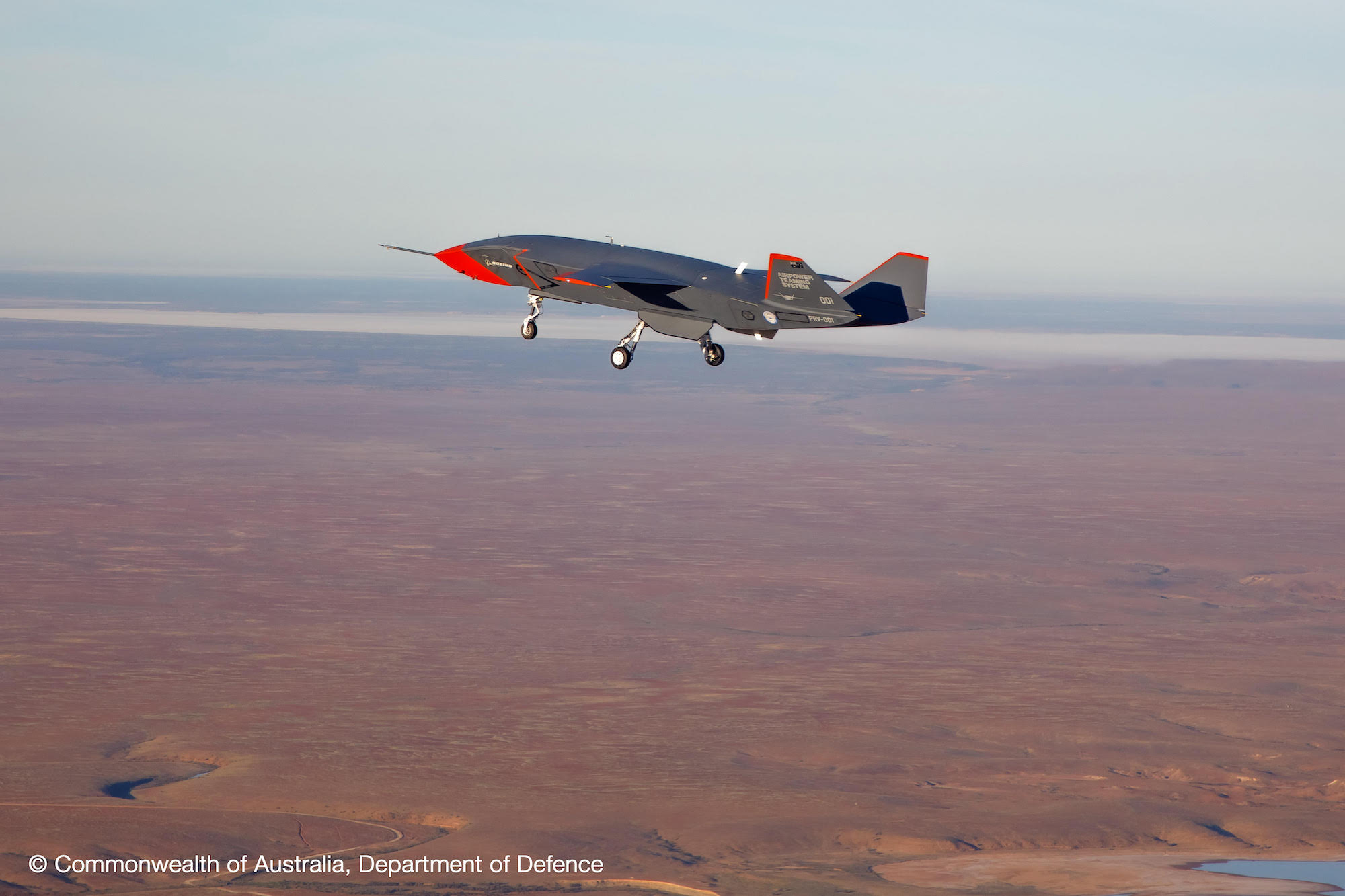

The US Air Force is looking for a new way to win fights in the sky, and is turning to drones that can escort crewed fighters to do so. To explore the concept, the US Air Force is eyeing the idea of using a drone called the Ghost Bat, which was built for the Royal Australian Air Force. Speaking at an August event with the head of the Royal Australian Air Force, US Air Force Secretary Frank Kendall suggested that the MG-28 Ghost Bat, or a variant, may fly into combat alongside future US fighters. The remark was first reported by Breaking Defense and hints at a future of international design for the loyal wingmate aircraft of tomorrow.
“I’m talking to my Australian counterparts in general about the [Next Generation Air Dominance] family of systems and how they might be able to participate,” Breaking Defense reports Kendall saying. In that context, Kendall continues, the Ghost Bat “could serve ‘as a risk reduction mechanism’ for NGAD’s drone capability.”
Next Generation Air Dominance is a long-in-development Air Force program and concept for designing aircraft that will fight in the skies of the 21st century. Historically, the Air Force has invested a great deal of effort into developing generations of fighter jets, with each wave flown alongside fighters from the previous and succeeding eras until deemed fully obsolete and phased out.

Generations of jets
Consider the F-4 Phantom, a third-generation fighter that first entered military service in 1958, where it flew alongside the second-generation F-100 Super Sabre. The US retired the F-4 Phantom in 1996, after it flew alongside fourth-generation planes like the F-15 and F-16. Today, those fourth generation fighters fly alongside fifth-generation planes like the F-22 and F-35.
That pattern of development, which matched the pace and limits of aircraft development in the 1950s through 1990s, meant planes being flown for decades, despite becoming more and more obsolete as newer aircraft entered service at home and abroad.
“The Next Generation Air Dominance program is employing digital engineering to replace once-in-a-generation, mass-produced fighters with smaller batches of iteratively-upgraded platforms of multiple types,” declares an Air Force acquisition report from 2019-2020.
Ghost Bat is a product of the Loyal Wingman program, which set out to design a dependable drone escort for fighters. This program is a way for the Air Force to iterate on plane design without committing to decades of service from the drones.
Loyal wingmate
In the 2019-2020 report, the Air Force described Next Generation Air Dominance as a way to achieve air superiority in challenging conditions. At present, the air superiority mission is performed by crewed fighters like the F-22 and F-15, whose pilots risk their aircraft and their lives when fighting against enemy aircraft and anti-air weapons. Instead of building a single new fighter to replace F-15s and F-22s, the Air Force wants to borrow from the iterative design of the automotive industry, making drones with open architecture that can be more quickly developed, all in the name of improving the Air Force’s ability to survive, kill, and endure in the face of enemy aircraft and weapons.
This survival will come as part of a mixed fleet of drones and crewed aircraft. Under the Loyal Wingman program, the Air Force has worked for years to develop a drone that can fly and fight alongside a crewed aircraft. Loyal wingmates, as envisioned, will fly alongside F-22s and F-35s, and any crewed aircraft that replaces the stealth jets may be designed with loyal wingmates in mind.
What is the Ghost Bat?
The Ghost Bat is an uncrewed plane that is 38 feet long, with a flight range of 2,300 miles. Boeing, which makes it, says that the drone will incorporate sensor packages for intelligence, surveillance, and reconnaissance, and expects it to perform scouting missions ahead of other aircraft, as well as being able to detect incoming threats. In addition, the plan is for the Ghost Bat to employ “artificial intelligence to fly independently or in support of crewed aircraft while maintaining safe distance between other aircraft.”
When the Royal Australian Air Force announced the Ghost Bat in March, they said it was the “first Australian-built aircraft in more than 50 years.”
The name, selected from a pool of over 700 possibilities, is a tribute to the only carnivorous species of bat in Australia; they are hunters that use both eyes and echolocation to hunt prey. As the announcement from the RAAF explained, Ghost Bat was chosen as a name because ghost bats are the only Australian bat that can prey on both terrestrial and flying animals. In addition, the RAAF pointed to the drone’s possible use in electronic warfare, a mission already carried out in Australia by a unit with a ghost bat symbol.
None of this offers a wealth of information on what the Ghost Bat actually does, but that’s sort of the point. What the Ghost Bat most needs to be able to do is be an uncrewed plane that can fly safely with, and receive orders from, crewed aircraft. To meet the goals of Next Generation Air Dominance, the Air Force wants planes that can be easily adapted to new missions and take on new tools, like sensors or electronic warfare weapons, or other tech not yet developed.
Boeing built the Ghost Bat for the Loyal Wingman program, but it’s not the only loyal wingmate explored. The Kratos Valkyrie, built for the Air Force and tested as a loyal wingmate with the Skyborg autonomous pilot, has already seen its earliest models retired to be museum pieces.
While these are distinct aircraft, the flexibility of software and especially open-architecture autopilots means that an autonomous navigation system developed on one airframe could become the pilot on a different one. It is this exact modularity and flexibility the Air Force is looking at, as it envisions a future of robots flying alongside human pilots, with models numbered not in generations but years.
